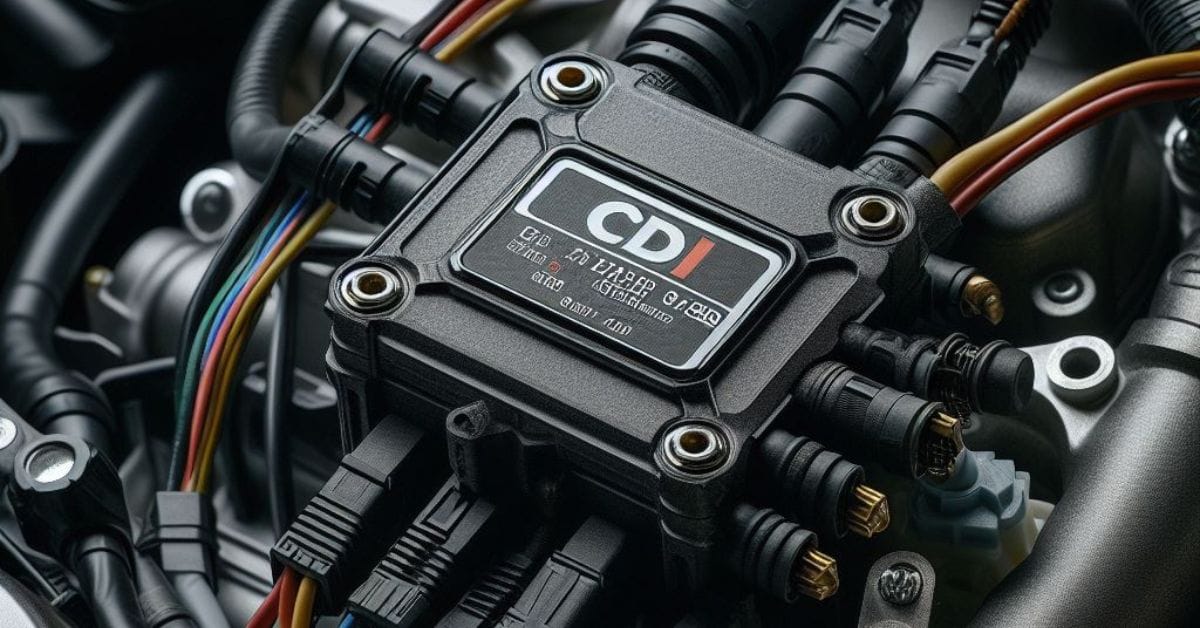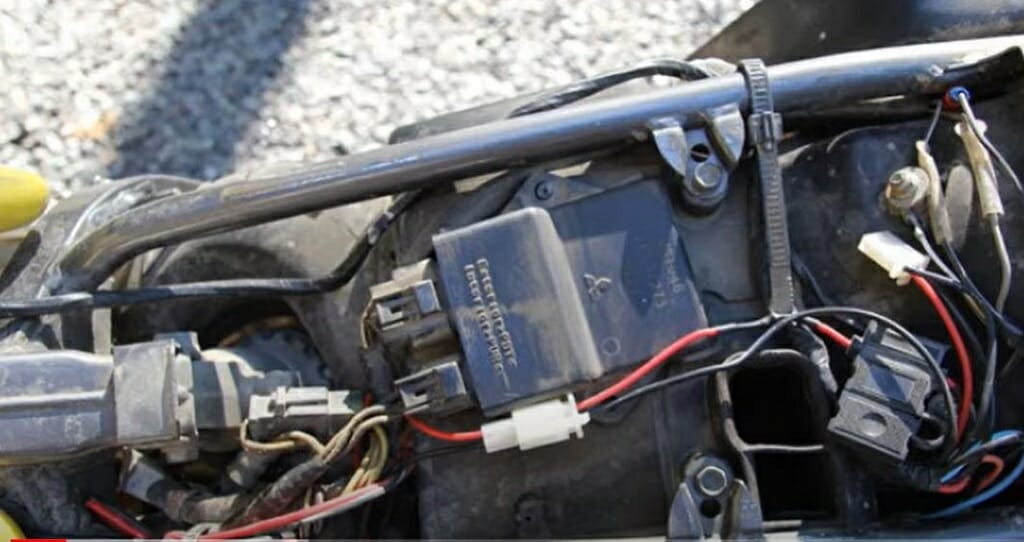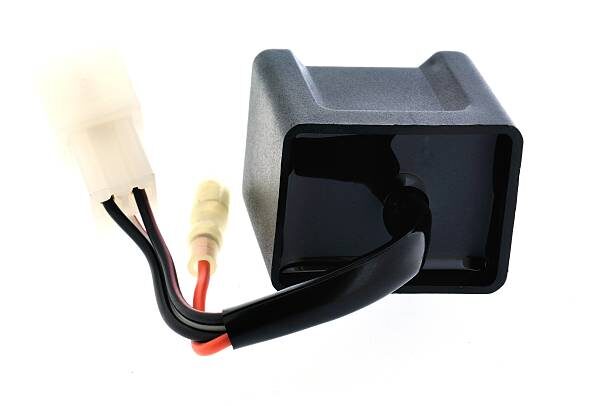What Does a CDI Box Do? (Guide)

Have you ever wondered what makes your motorbike’s engine roar to life? It’s the CDI box, a little component with a big job.
This unsung hero of the ignition system, the Capacitor Discharge Ignition (CDI) box, is the powerhouse behind the spark plug’s spark. It’s a key player in the smooth running of your engine.
In this article, I’ll be diving into the nitty-gritty of what a CDI box does. Whether you’re a seasoned rider or a newbie, understanding the role of the CDI box can help you troubleshoot engine issues and enhance your riding experience. So, let’s rev up our knowledge engines and get ready to learn more about this crucial motorcycle component.
Understanding the CDI Box
Now, let’s move on to the actual beast – the CDI box. So, what’s it? Simply put, it’s the heart of your motorbike’s ignition system.

Video | LearningZone
Here’s the real kicker: The CDI box, short for Capacitor Discharge Ignition, is responsible for setting the spark’s timing and intensity to the spark plug. Without this tiny yet robust component, your bike would go nowhere fast. It’s truly a behind-the-scenes hero for your engine.
If the box malfunctions, you could witness a range of engine issues. Trust me, you don’t want that. Think slow starting, misfires, or even a completely dead motorbike.
Functionality of a CDI Box
Before diving into the technical details, let’s simplify what a CDI box does.
- Ignition System’s Brain: The CDI box is like the brains of the bike’s ignition system. It’s hidden but always hard at work, ensuring every ride is smooth and efficient.
- Coordinating Key Components: It’s fascinating how the CDI box manages the bike’s battery, spark plugs, and engine. In my experience, this coordination is crucial for that initial kick-start and overall engine performance.
- Storing Electrical Energy: Linked to the stator coil, the CDI box stores electrical energy generated by the engine. I’ve always been impressed by how efficiently it collects and holds this power until needed.
- Controlling Spark Timing: As I’ve seen, the real magic lies in the CDI box’s ability to decide the perfect moment for releasing stored electricity. This precision affects the ignition of the fuel mixture, contributing to optimal engine performance.
- Optimal Spark Creation: The key role of the CDI box is to create the ideal spark for fuel ignition. Getting this right keeps your bike moving smoothly, something I’ve come to appreciate in my rides.
From what I’ve learned, each bike’s CDI box is unique, and any changes should be made with care. While upgrades can enhance performance, it’s important to remember that not all CDI boxes are interchangeable.
Decoding the Technical Specs
Let’s dive into the technical specifications of CDI (Capacitor Discharge Ignition) boxes, keeping it detailed and to the point.

From my experience tinkering with bikes, I’ve learned that the specs of CDI boxes can vary, but there are some common characteristics you’ll find in most of them.
- Voltage Ranges: CDI boxes typically operate within a specific voltage range. For many bikes, this is usually around 200-600 volts for the capacitor charge. This high voltage is essential for generating a strong spark in the spark plug.
- Power Output: Now, this is where things get interesting. The power output of a CDI system is quite high compared to traditional ignition systems. This is because the discharge of the capacitor is rapid, releasing a significant amount of energy in a very short time. This high-energy spark is what gives your bike that powerful and efficient combustion.
- Typical Dimensions: Regarding size, CDI boxes are generally compact. I’ve seen ones that fit snugly into a small space on the bike, making them quite convenient. However, the exact dimensions can vary based on the make and model of the motorcycle. It’s always a good idea to check the size if you’re looking to replace or upgrade your CDI box.
- Capacitance Range: The capacitor in the CDI system, which is crucial for storing the electrical charge, typically has a capacitance range. This range can vary, but it’s usually within a few microfarads. The capacitance value plays a key role in determining the duration and intensity of the spark.
- Ignition Timing Control: Most modern CDI boxes have ignition timing control, which can be fixed or programmable. Programmable CDI boxes are a bit more advanced, allowing for more precise control over the ignition timing, which can be a real game-changer for performance.
- Durability and Environmental Resistance: From what I’ve seen, these boxes are designed to be durable and resistant to various environmental factors like vibrations, moisture, and temperature fluctuations.
Remember, these specifications can vary based on the bike’s specific requirements and the CDI box’s design. It’s always fascinating to see how these small components pack such a punch and how critical they are for the smooth performance of a motorbike.
Benefits of Using a CDI Box
As we delve into the world of motorized wonders, let’s not overlook one gem that ensures your motorbike begins each journey with a roar. Yes, I’m talking about the CDI box.
- Optimized Ignition Timing: The CDI box sets the spark plug’s timing. In my experience, this means the bike accelerates faster and runs smoother.
- Enhanced Reliability: These boxes are tough. They stand up to temperature changes, moisture, and dust. For me, it’s meant fewer worries about maintenance and system failures, especially when I’m on a long ride.
- Reduced Engine Misfires: The CDI box cuts down on engine misfires by ensuring correct ignition. I’ve noticed a cleaner and more efficient engine performance, which is great for power and fuel economy.
- Safety Measures: The control over ignition timing significantly reduces the risk of engine issues like pre-ignition or detonation. Knowing my bike is less likely to suffer from these serious problems gives me extra peace of mind.
The CDI box isn’t just another part central to the bike’s performance. From what I’ve seen and felt, it’s a perfect blend of power, efficiency, reliability, and safety.
Troubleshooting and Maintenance
When troubleshooting your bike, the CDI box is one area you shouldn’t overlook. Due to its significant role in the functioning of your bike, a faulty CDI box can cause a range of issues hindering your bike’s performance.
| Step/Aspect | My Experience and Tips |
|---|---|
| Initial Check | When my bike started acting up, the first place I looked was the CDI box. It’s easy to overlook but trust me, it can be the culprit behind a ton of issues like starting problems, engine misfires, or even stalling. |
| Visual Inspection | I always start with a visual check. Look for obvious signs like cracks, burns, or loose wires. I once found a slightly burnt connector that was causing major headaches! |
| Resistance Test | If everything looks good visually, grab a multimeter. I’ve learned to check for abnormal resistance readings – they’re a telltale sign something is wrong with the CDI box. |
| Regular Maintenance | Here’s what I do: keep the CDI box and its surroundings clean to avoid dirt buildup, which can lead to overheating. It’s a simple step, but it’s saved me from bigger issues down the line. |
| Preventative Measures | Regular checks for cracks burned connectors, or loose connections during cleaning sessions have been a game-changer for me. Preventative maintenance can really extend the life of your bike. |
| Professional Help | If you spot something concerning, don’t hesitate to get professional help. I’ve learned that sometimes it’s best to let the experts handle it, especially when it comes to the crucial parts of your bike. |
Remember, the CDI box isn’t just another part of the ignition system; it’s the heart of your bike’s performance. Treat it well, and your bike will always be ready for the road – that’s something I’ve come to appreciate in all my years of biking and engine tinkering.
Frequently Asked Questions
- What is The Lifespan of a CDI Box?
- From my time around bikes, I’ve seen CDI boxes last quite a while, typically several years or more, depending on how you treat your bike. Like any part, they last longer with good care and regular maintenance.
- Are CDI Boxes Interchangeable Between Different Bikes?
- This one’s tricky. CDI boxes aren’t one-size-fits-all. Each model is designed for specific bike types and engines, so it’s crucial to check compatibility before making any swaps.
- Can I Upgrade my CDI Box for Better Performance?
- You can! Upgrading your CDI box can enhance your bike’s performance. But remember, it’s not just about plugging in a new box – compatibility and proper installation are key.
- Is It Safe To Troubleshoot a CDI Box on My Own?
- If you’re handy and have a bit of know-how, you can do some basic troubleshooting. But for more complex issues, I always recommend contacting a pro.
- Does Weather Affect The CDI Box’s Performance?
- These little guys are tough, but extreme conditions can take a toll. Too much heat or moisture isn’t great, so keep an eye on them, especially if you’re riding in harsh weather.
References
Organizations:
- Society of Automotive Engineers (SAE). https://www.sae.org/
- American Motorcyclist Association (AMA). https://americanmotorcyclist.com/
- International Motorcycle Manufacturers Association (IMMA). https://www.immamotorcycles.org/
Books:
- “Motorcycle Electrical Systems: Troubleshooting and Repair” by Tracy Martin. https://www.barnesandnoble.com/w/how-to-troubleshoot-repair-and-modify-motorcycle-electrical-systems-tracy-martin/1116912596
- “The Essential Guide to Motorcycle Maintenance” by Mark Zimmerman. https://www.barnesandnoble.com/w/essential-guide-to-motorcycle-maintenance-mark-zimmerman/1101130609
Website Resources:
- TheHardTail.com. https://www.thehardtail.com/electricalmaintenance/
- MotorcycleZombies.com. https://www.motorcyclezombies.com/rebuild-tune-motorcycle/electrical-systems-wiring/
Video References:
LearningZone
